A case in Brazil’s Mata Atlântica proves why there is no real reforestation without targeting biodiversity
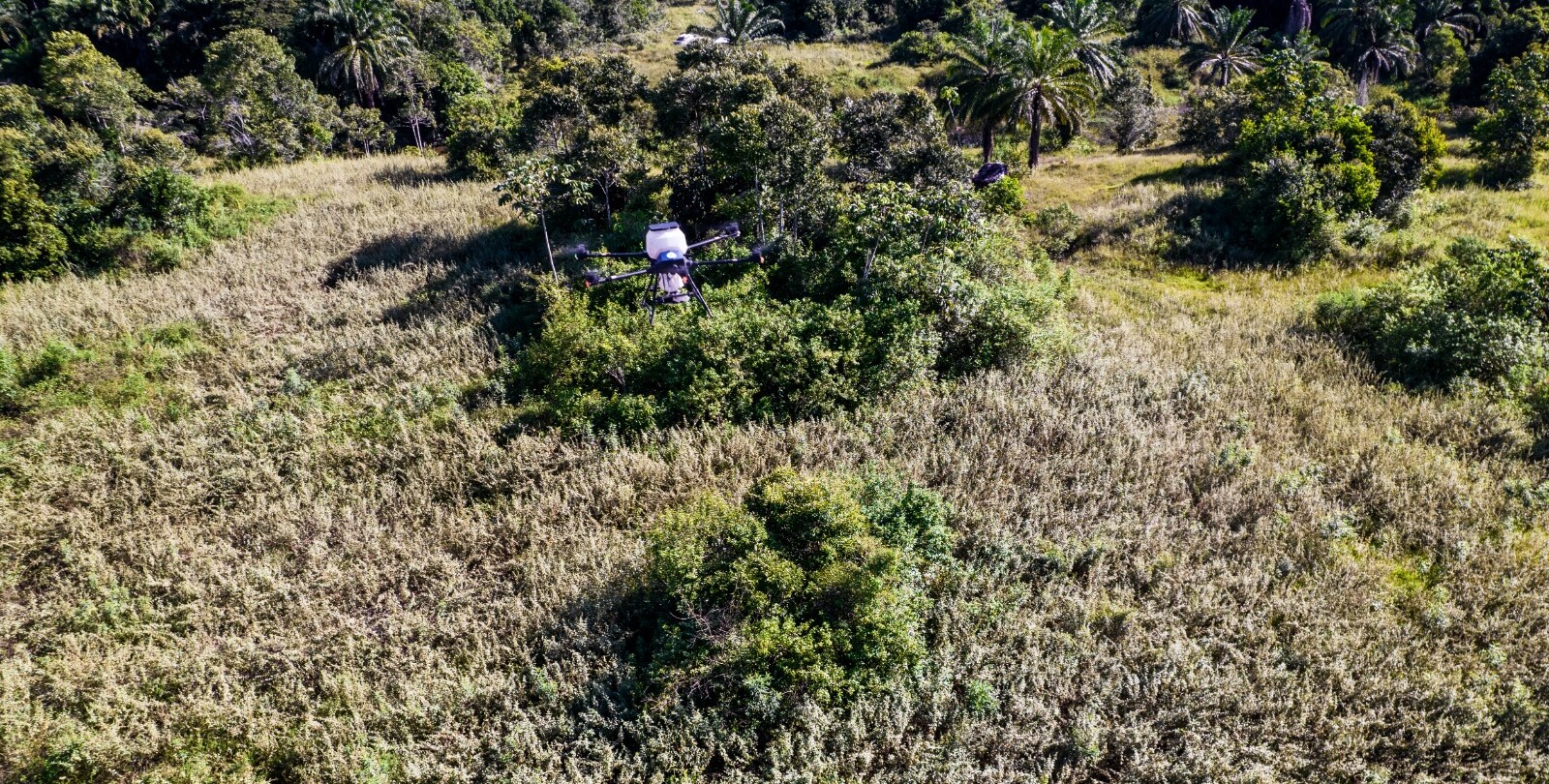
A project in the municipality of Santa Cruz Cabrália in the state of Bahia, Brazil, is reforesting 55 hectares, 14 of which have already been reforested. Photo: Pedro Abreu/Morfo
Read more
Related articles for further reading
To have all nature’s potential on our side to tackle climate change, the world needs to restore at least one billion hectares of degraded lands by 2030– an area about the size of China. The clock is ticking, and our progress has been slow. At the current rate, we would only achieve only 5% (50 million hectares) of this goal.
However, the issue of scale is not the only concern. Current restoration initiatives reveal another worrying trend: the lack of biodiversity in flora and the limitations around seed supply. Only 12% of all restoration projects plant more than 10 species and almost half (45%) of forest restoration commitments from tropical countries involve establishing monoculture plantations, despite the diversification of species being a key policy recommendation.
Science is clear – nature can provide up to one-third of the mitigation targets to meet the Paris Agreement goals. But these cannot be dissociated from biodiversity goals. Forests with a diversity of tree species are 70% more effective as carbon sinks than compared to monoculture forests.
As we celebrate the International Day for Biological Diversity (May 22nd), an inspiring story from the depths of the Atlantic Forest in Brazil sheds light on how science, technology and community engagement might solve this problem.
In Santa Cruz Cabrália, a team of researchers is testing and comparing the efficiency and costs of traditional human replanting intervention with their multi-year “smart planting” technique to revitalise a former sugarcane plantation and cattle field, that had been devoid of any vegetation for the past 15 years.
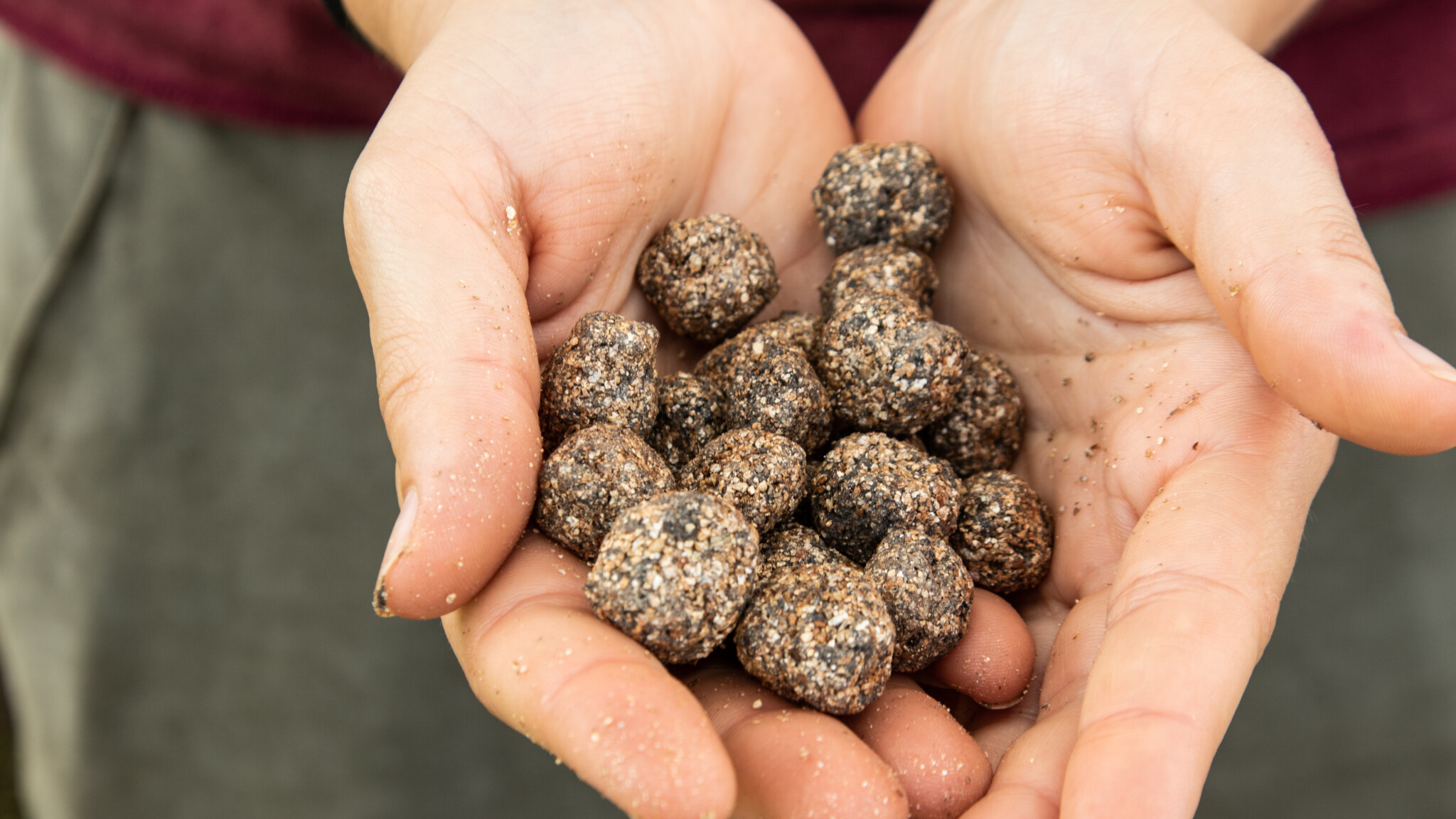
Organic pods protect the seeds and boost their germination. Photo: Pedro Abreu/Morfo
The strategy, which involves the use of artificial intelligence and machine learning to evaluate soil conditions and select native seeds most likely to thrive in the given area, factoring in climate change predictions, has already been deployed in an area equivalent to 800 soccer fields across 19 different restoration projects in the Amazon rainforest, the Mata Atlantica, and the Atlantic Equatorial forest in Africa.
Now, a year after the restoration began, the 55-hectare land in Santa Cruz Cabrália is flourishing with seedlings from 24 different species. The growth has been so rapid that researchers traversing the former field need to shield their legs, arms, and faces. The temporary wild leguminous vegetation, initially sown to aerate the soil and foster a conducive microclimate for the growth of native Mata Atlântica’s seeds, has already reached the height of an average male human.
“If we want to plant biodiversity, we need to research and understand biodiversity,” explains Adrien Pages, the CEO of Morfo, the Franco-Brazilian nature tech company leading the restoration effort. “There is a data gap about the development of trees that are not part of the production logic. We are trying to cover this base,” he states while diving into the leguminous vegetation and marking with flags recently found native seedlings thriving where it used to be dryland.
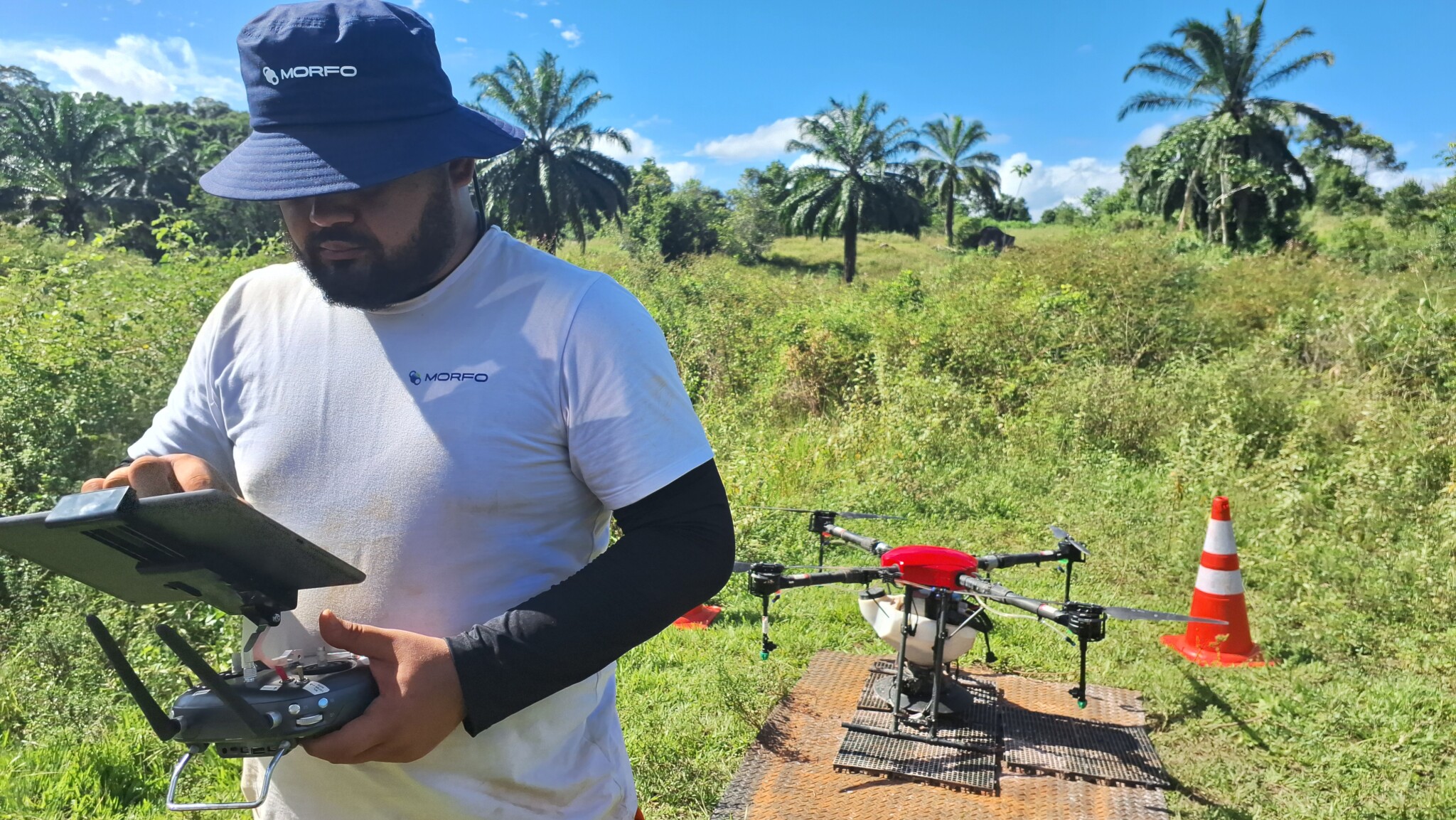
Drones can deploy 3,000 seeds per hour. Photo: Mariana Ceccon/Nature4Climate
This is the first time it is being tested in the same area using two different restoration methods for scientific comparison. After the tech-powered biome analysis, a selection of the most suitable native seeds is encapsulated in patented pods designed to protect and nourish them, thereby enhancing their germination in wild conditions. Drones then come underway, speeding up the planting process by deploying 3,000 capsules per hour to expedite the distribution of seeds in sites that are difficult for humans to access. The process concludes with the digital ecological monitoring of the land, year after year, tracking biodiversity, tree density, and carbon sequestration potential.
“Merely observing a seedling grow does not provide a comprehensive understanding of local biodiversity,” explains Carol Nunes Luiz, a forest engineer at Morfo. “If there are no other trees from the same ecosystem thriving in the vicinity, the area lacks eco-functionality. Our goal is to restore a forest, not to intensify competition among plants”, she states.
The smart and biodiverse planting technique placed Morfo as one of the 12 companies recognized by the World Economic Forum and UpLink as winners of the Trillion Trees Challenge last year.
The Human Factor
But a successful biodiversity plan doesn’t solely rely on new technology. It also heavily depends on seed availability – and traditional knowledge. To disperse tons of native seeds, it’s necessary to trace their original source and locate places where the natural ecosystem still co-lives in harmony with traditional communities. Each seed dropped by the drone involves manual curation by someone with deep roots in the forest.
In the untouched Mata Atlantica Forest, located 50 kilometres from Morfo’s restoration land, a man who once survived by felling trees for the charcoal industry now uses his expertise to support his family while preserving the forest. Crispin Barbosa de Jesus is currently one of the 1,000 seed collectors collaborating with Morfo in Brazil to restore degraded lands.
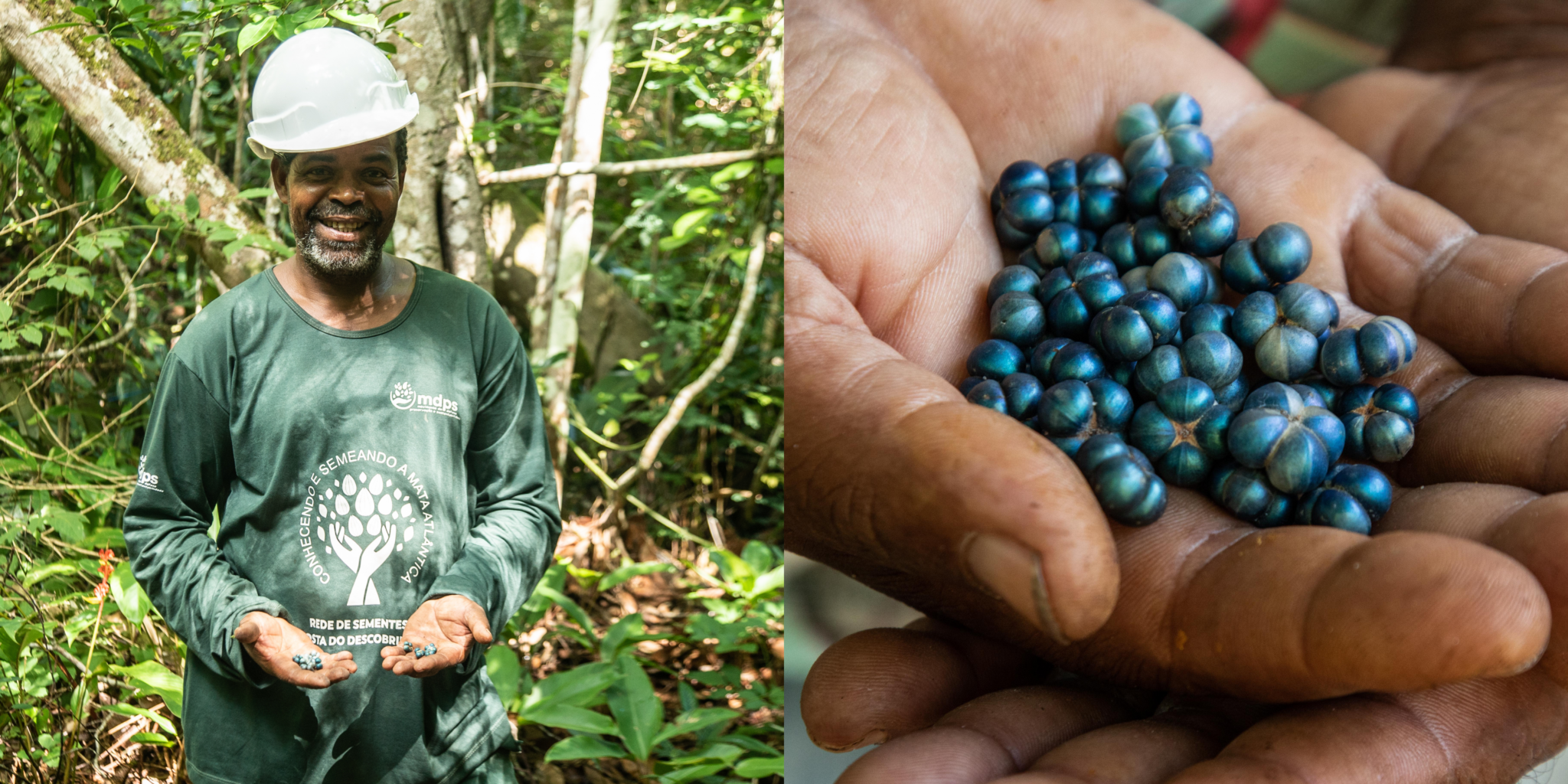
Crispin holds seeds of a fruit named Maria Luíza, also called the "Blue Diamond". Photo: Pedro Abreu/Morfo
“People only appreciate it when they see the original tree, the beauty of the wilderness, and the quality of the seeds that will emerge from it. What grows in a eucalyptus field? There are no animals there, no insects. We lose life,” he says.
Twice a week, Crispin, accompanied by his sons and friends, ventures into the native forest. Their mission is to curate the best seeds for transportation to restoration fields, while ensuring a sufficient amount is left behind to nourish the animals and safeguard the original ecosystem. A kilogram of seeds can earn him between $10 and $300, which he sells not only to Morfo but also to NGOs and other restoration initiatives in Bahia state.
Crispin is now looking to expand his activities. He is seeking investment to establish a cold chamber to enhance the longevity of the seeds. This would enable him to provide these vital seeds more frequently for the restoration of other degraded lands. He says, “Now, taking the life of a tree is the same as taking my own life”.
Growing opportunities
In addition to Morfo, Crispin has been selling his precious and rare seeds to other NGOs that are integral to this equation, such as Natureza Bela. This organization has spent the last 23 years replanting more than 100,000 seedlings annually from 60 different species. Caline Gally, a representative of the NGO, explains that they were invited to implement the traditional replanting method in Santa Cruz Cabrália, alongside Morfo’s smart planting, to compare the results.
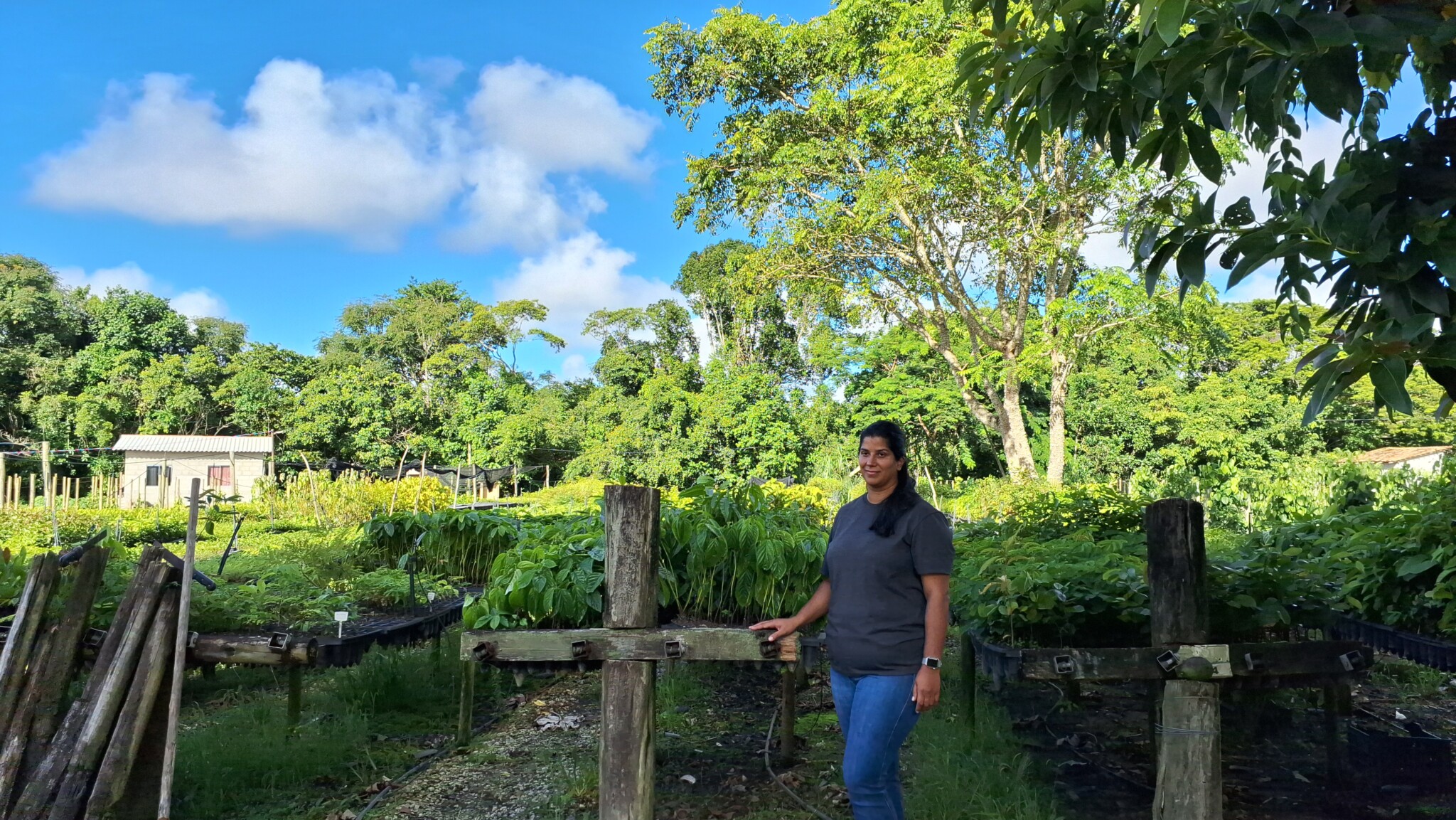
Natureza Bela uses Crispim’s seed to grow seedlings in a nursery and only then replant them in restoration areas. Photo: Mariana Ceccon/Nature4Climate
Recognizing that technology can enhance seed growth and biodiversity in the area, and viewing this technique as a welcome improvement, she elaborates on the future of Natureza Bela. The organization is expanding its focus on prospecting private lands with restoration potential to join a future carbon market. They are working to guide companies in building nature-positive portfolios. “Now we use satellite images to scan protected areas and those with restoration potential. We then reach out to the owners in a lengthy process to develop a trust relationship and persuade them to allow us to restore the area in exchange for compliance with environmental laws and the generation of carbon credits,” she adds.
According to new data from naturebase.org, Brazil has the potential to mitigate up to 746 million tonnes of carbon dioxide equivalent (MtCO2e) per year if biodiverse reforestation projects are implemented at scale in the country. This represents the world’s largest mitigation potential through reforestation.
READ MORE:
- Wetlands for livelihoods: local communities thrive by protecting mangroves and peatlands in Borneo
- Natural Climate Solutions must be nature-based, sustainable, climate-additional, measurable, and equitable, new study finds.
- New maps help decision-makers factor albedo into tree-planting strategies
- Nature-based solutions receive only 37% of the financing needed to reach global climate goals